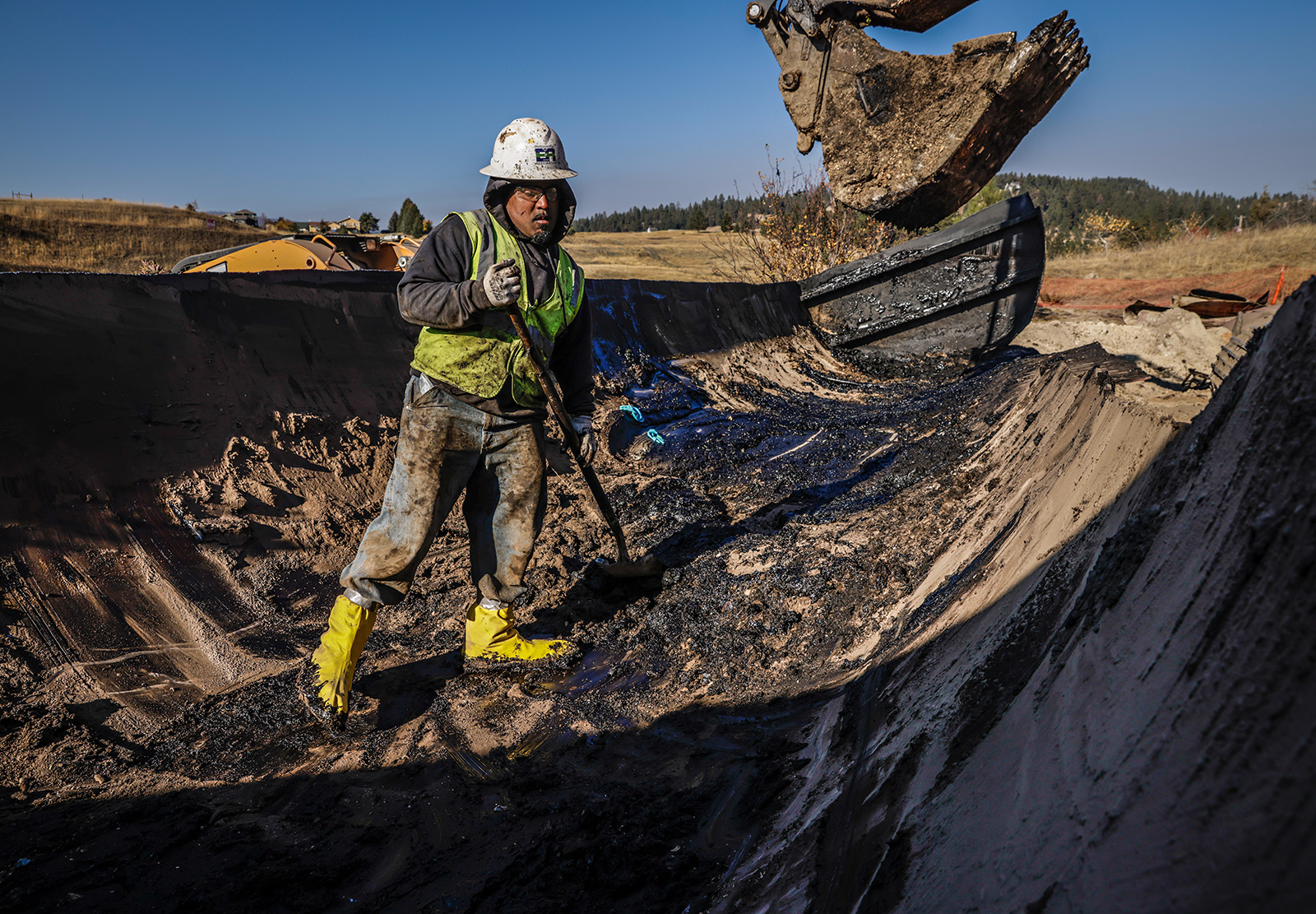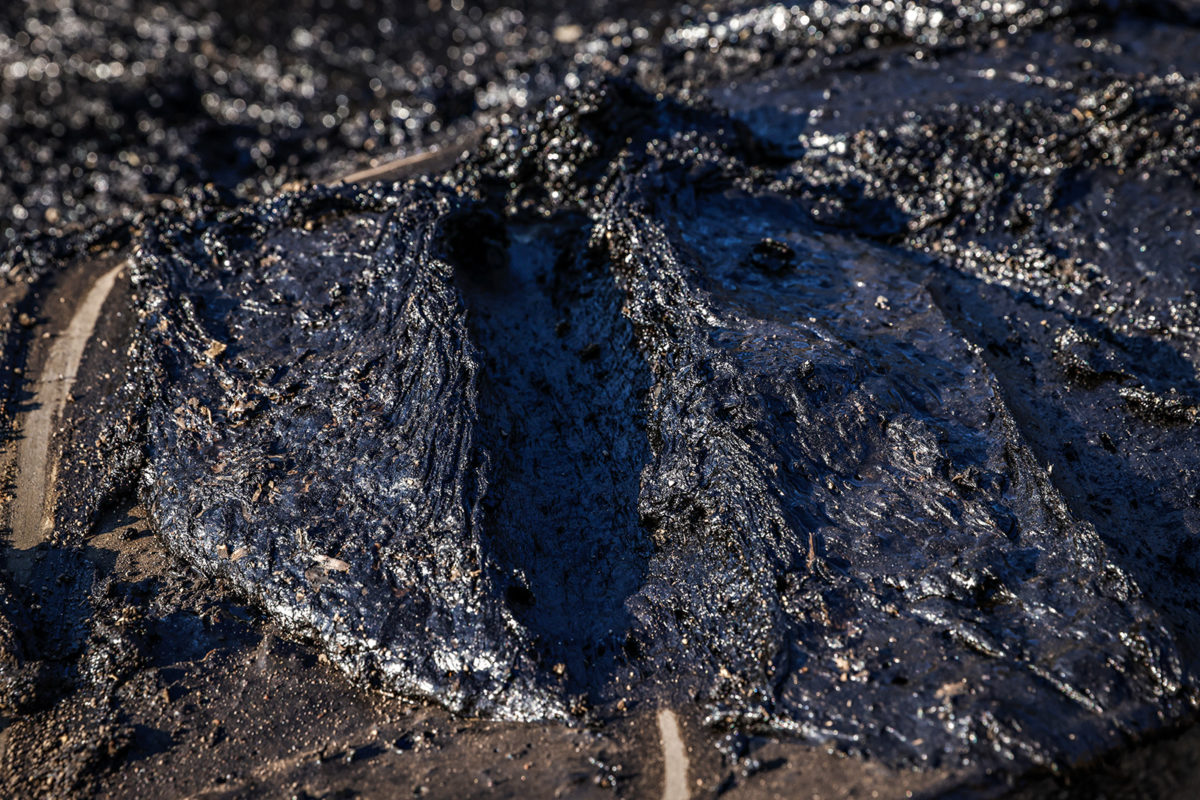After 26-year Delay, Environmental Cleanup Nears Completion at Contaminated West Valley Site
First documented by state and local officials in 1996, the EPA’s emergency response to the site of 14 leaking tanks containing 80,000 gallons of hazardous materials near Ashley Creek was completed in five weeks
By Tristan Scott
Nate Schwegel grew up in the rolling foothills west of Kalispell, in a West Valley Drive neighborhood just up the road from Ashley Creek. Decades later, he still vividly recalls the jumble of mysterious steel tanks striking haphazard poses amid the rabbit brush and bunch grass down the road from his childhood home, a junkyard playground for local children.
“I remember seeing them as a kid. I always wondered what was in them,” said Schwegel, who now works as a response manager for Environmental Restoration LLC, a private company that responds to nationally significant incidents involving the release of hazardous materials.
“I kind of assumed they were empty.”
As it turns out, the tanks weren’t empty. They contained tens of thousands of gallons of hazardous oil-based hydrocarbons and, despite 26 years of documented complaints to both local and state officials, as well as repeated attempts by those agencies to “compel cleanup by the property owner,” they’d been abandoned on the half-acre postage stamp of farmland, left to rust out and leak toxic substances onto the agricultural parcel.
Until now.
In the span of about five weeks beginning Sept. 15, a $1.2 million emergency cleanup by the federal U.S. Environmental Protection Agency (EPA) has been unfolding on what’s been dubbed the “Valley Drive Abandoned Slurry Site,” leading to the disassembly and removal of the tanks and the disposal of 545 tons of contaminated soil, 80,000 gallons of tank waste and 180 cubic yards of steel waste, which has now been burrito-wrapped and trucked away to a landfill.
“It was kind of weird when I got the call about the job because I knew exactly where the site was,” Schwegel, who now lives in Libby, said. “My mom and my sister still live a half-mile away.”
Even though neighbors have been complaining about the tanks for nearly three decades, resistance from the property owners have stymied local attempts to investigate the site. By the time a local firefighter named Josh Pipolo notified the EPA’s National Response Center on July 14, 2022, explaining that “a dark material leaking from the largest tank was pooling on the ground” in the public right of way, the tanks were barely intact.
“We could have been mere weeks to months away from serious well and groundwater contamination,” Pipolo said. “I’m curious as to how many other serious hazardous materials sites exist within the county. This seems like a serious failure of leadership by the state and county.”
According to a report submitted by EPA’s Paul Peronard, who for 24 years has worked as on-scene coordinator for the agency’s Comprehensive Environmental Response, Compensation and Liability Act (CERCLA) program in Region 8, the tanks were in various stages of degradation.
“Based on my observations and the current state of the degrading tanks, I am concerned that the tanks are at risk of failing,” Peronard wrote in an action memorandum seeking approval and funding for an emergency removal action. “I am concerned that the large tank that is leaning on the fence post will become unstable, roll onto the public right of way, crack, and empty its contents onto the road. I am also concerned that the other tanks will continue to deteriorate, and the amount of material leaking from these tanks will increase.”
“I believe that there will be a direct impact on the nearby watershed system if the leaking continues or if a catastrophic failure of one of the degrading tanks occurs,” Peronard concluded in the memo.

Because the tanks were located on private property, Peronard’s team needed permission to access the land and begin the cleanup. However, some of the black, viscous substance had leached into the drainage culvert and was spilling off the property, allowing Peronard to sample it.
Sampling at the site confirmed the presence of polycyclic aromatic hydrocarbons, or PAHs — specifically, the carcinogenic compounds xylene, ethylbenzene and naphthalene, which can “cause cancer, mutations, birth defects, and/or death in fish, wildlife and invertebrates,” and which Peronard determined “present a threat to public health and the environment and meet the criteria for initiating a removal action.”
Moreover, evidence of human activity at the site included “numerous instances of graffiti on several of the tanks, and a smattering of clothes and other human detritus that indicated that some human entry to the site was ongoing,” according to Peronard. During a site inspection in August, “children were observed playing in and about the adjacent residential properties,” and neighbors to the property said they’ve watched kids playing with the “valves” on the tanks.
Still, despite the threat to public and environmental health, and notwithstanding the exhaustive documentation by Flathead County and the Montana Department of Environmental Quality (MDEQ), the resistance by the property owners has obstructed cleanup efforts.
“This has been getting bounced around in Montana for the better part of two decades, in part because state and local officials don’t really like to hammer on their local citizens,” Peronard told the Beacon. “They weren’t going to go out and lower the boom on these folks. That’s just not how business is done in Montana. The county was easy enough to work with, they just weren’t going to step in beyond sending the notices of a violation. So, when we got the referral, we contacted Flathead County and got tons of information about the property. We reached out to the property owners. That didn’t go so well.”
State and county records reveal attempts to enforce cleanup measures on the property dating back 26 years, including an investigation on the property spanning several years between 2018 and 2020. Flathead County Attorney Travis Ahner issued the property owner a notice of violation of a local decay ordinance, and conducted site visits in the summer of 2018, summer of 2019, January 2020, February 2020 and July 2020. The local official posted a notice of violation on the property but did not received a response and took no further action.
Montana DEQ case files go back even further and include detailed field investigation reports from July 18, 1996, identifying the property owner as Irene Serio, who along with her husband owned a road dust suppression business called Sure-Seal. The case files summarize efforts from 2005 through 2017 to contact the Serios “on multiple occasions through process server, mail, family members, and social media.”
“DEQ’s attempts to contact Irene Serio were unsuccessful,” the reports conclude.
To document the provenance of the tanks, the agency reported the Serios acquired the “crude oil tank bottoms” from local timber businesses and “veneer dryer precipitation residue” from wood product plants. Based on its sampling data, MDEQ concluded that the material leaking from the tanks was likely “tack oil,” a black, viscous product used as a binder for pavement surfacing.
According to Kevin Stone, a public information officer for DEQ, the agency “has been aware of this site for many years and, using the options available to us, we have attempted multiple timesto require the landowner to clean up the property.”
“As recently as 2019 DEQ pursued legal action to enforce the Solid Waste Management Act and administrative rules, but we were unable to locate the property owner,” Stone wrote in an email. “The state has lacked the resources to go in and do the cleanup on our own, and we are pleased that the EPA has been able to take advantage of available funding to perform an emergency removal action and address this contamination.”

For Peronard, who 20 years ago led the EPA’s emergency response to the lethal asbestos contamination that has devastated the town of Libby, a few disconnected phone numbers weren’t going to deter him. So, with a heap of documents on his desk, including possible contact information for Serio, Peronard picked up the phone and started dialing.
“On July 27, 2022, I attempted to contact Irene Serio by telephone, placing six phone calls to six different phone numbers,” according to Peronard’s report. On the sixth try, an individual answered the phone, identifying himself as Serio’s son. He took a message and, a little while later, Serio called Peronard back.
“During this conversation, I verbally requested that she sign EPA’s Consent for Access form to allow EPA access to the Serio Property to investigate and cleanup the leaking tanks,” Peronard said. “Irene Serio stated that she bought the tack oil and pine resin that is in the tanks from a local timber company and that she and her husband planned to use the material in their paving business. She also stated that she was not afraid of the EPA and that ‘the EPA cannot do s***’ and hung up on me. On July 27, 2022, EPA emailed Irene Serio and her husband requesting access to the Serio Property. Her husband responded via email saying, ‘f*** you and the horse you rode in on.’”
Finally, Peronard applied for and received a federal warrant to enter and access the property, which expires on Nov. 30, by which time the site will have been graded and seeded with native grass.
Speaking by telephone on his way to another emergency cleanup in Wyoming, Peronard said overcoming obstacles like those he encountered on West Valley Drive are part of the job.
“With all that in mind, this isn’t the worst site I’ve been to, but it wasn’t pretty,” he said. “Fortunately, everything was still intact. There were minor leaks in some of these tanks, but everything was intact. If we waited five years? Ten years? I don’t know, but it’s so much easier to do the cleanup when the hazardous substance is still mostly contained.”